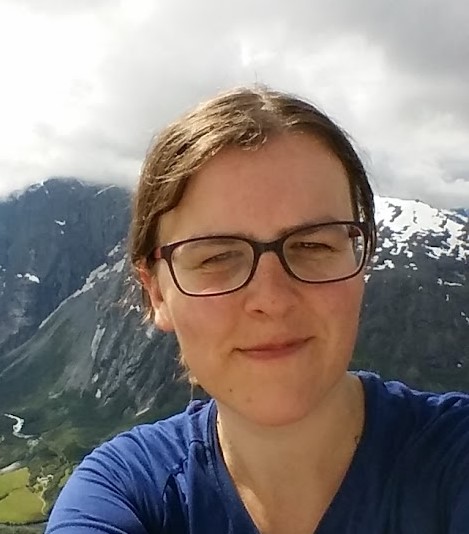User story: Estimating air pollution in Belgium with high time and spatial resolution
High resolution ATMO-Street air quality map for Belgium for the annual mean nitrogen dioxide (NO2) concentration in 2019.
Air pollution forms a threat to our health and environment. Thus, it is important that the quality of the air we breathe is closely monitored. In this user story Charlotte Vanpoucke and David Roet explain how the VSC HPC infrastructure is essential for the reporting of air quality for the whole of Belgium. The HPC infrastructure of the VSC makes it possible to accomplish the yearly calculations for the air quality maps within a week.
The Flanders Environment Agency (Vlaamse Milieumaatschappij or VMM) is the competent authority in Flanders for measuring, evaluating and creating air quality policy plans for Flanders and tasked with improving air quality and tackling air pollution. The Belgian Interregional Environment Agency or IRCELINE [1] is a Cooperation agreement between the Brussels, Flemish and Walloon regions on monitoring air emissions and processing and disseminating data. IRCELINE is also the competent authority for national and international reporting obligations on air quality matters for the whole of Belgium (e.g., annual reporting for the European Commission).
Air quality modelling
The air quality in Belgium is measured at fixed measuring stations spread over the entire country. These measurements provide very accurate hourly concentrations of the air quality at these specific locations. However, for assessment and planning purposes, the air quality has to be known covering the whole area of Belgium. To estimate the air quality in those locations where measurements are not carried out VMM and IRCELINE use air quality models. These computer models can determine the air quality over a certain period of time (e.g., one year) .
ATMO-street
To assess the air quality in the entire country, the high-resolution air quality model ATMO-Street is developed by VITO [3] in cooperation with VMM and IRCELINE. This model is a combination of 3 air quality models [4]:
- RIO-interpolation model (uses available measurements from the fixed measuring stations and interpolates them in a smart way using land cover data)
- IFDM (calculates the impact of emissions of point and line sources on the air quality in the direct surroundings of those point and line sources)
- OSPM (in license from Aarhus University; allows to refine the modelling in urban environments to account for street canyon effects)
Yearly calculations for the whole of Belgium ready within a week
The great benefit of the ATMO-street model is that it allows an estimation of the air quality with a high spatial resolution (at street level) and a high time resolution (hourly). However, this kind of high-resolution modelling requires lots of computer resources in terms of CPU, storage and memory and is time consuming. To illustrate: on a single core computer, a run for a single hour of the year takes up to 7 hours to simulate. So, calculating one entire year would mean 7 years. IRCELINE transfers the entire model chain to the HPC infrastructure of VSC, enabling them to accomplish their yearly calculations within a week. These time savings become even more important when multiple past years have to be (re)calculated.
Benefits using HPC
Charlotte Vanpoucke (IRCEL): “By using the HPC infrastructure of VSC we don’t need to invest in new IT infrastructure to ensure we have the needed resources: we can calculate with the most recent software and have an enormous capacity at our disposal. I haven’t run he ATMO-street model locally in years because it is so easy on VSC infrastructure.”
Importance of quality mapping
The air quality models of IRCELINE result in high-resolution air quality maps. The use of these maps is widespread:
• to assess the evolution of air quality
• to detect hot spot locations (locations with a high concentration of pollutants)
• to calculate exposure indicators and exceedances of (EU) air quality thresholds
• to make policy plans
• used by third parties for research purposes like health impact studies
David Roet (VMM): "Within recent years, our model results have become indispensable in supporting both the daily operational work of the environment agencies as well as for scientific research projects both internally and externally."
- [1] IRCELINE is a combination of IRCEL for the Flemish side and CELINE for the Walloon side
- [2] Source website IRCELINE: https://www.irceline.be/nl/documentatie/modellen/atmo-street
- [3] VITO: independent Flemish research organisation in the field of cleantech and sustainable development (https://vito.be/nl)
- [4]: Source website IRCELINE (https://www.irceline.be/nl/documentatie/modellen)
About the interviewees
 Charlotte Vanpoucke (born in 1985), obtained a master in Physics and Astronomy in 2009 and started the same year at the IRCELINE team of VMM. She gained experience in air quality modelling for assessment and reporting purposes for the whole of Belgium
Charlotte Vanpoucke (born in 1985), obtained a master in Physics and Astronomy in 2009 and started the same year at the IRCELINE team of VMM. She gained experience in air quality modelling for assessment and reporting purposes for the whole of Belgium
 David Roet (born in 1978), obtained his PhD in Chemistry from the University of Antwerp in 2011. He started working at VMM in 2010 where his main tasks are related to air quality modelling. His general interest are data science and everything computational.
David Roet (born in 1978), obtained his PhD in Chemistry from the University of Antwerp in 2011. He started working at VMM in 2010 where his main tasks are related to air quality modelling. His general interest are data science and everything computational.